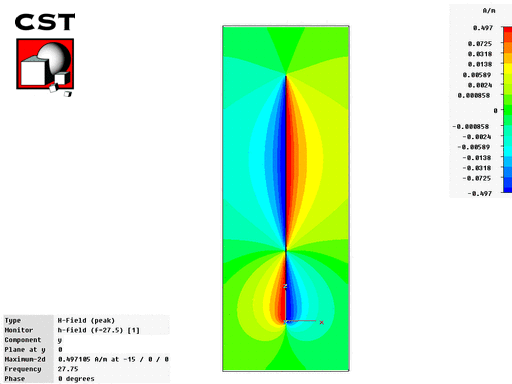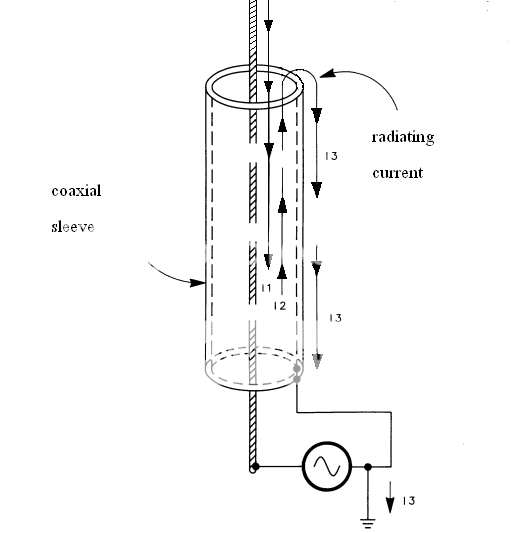To tell you the truth Homer, I did just as you suggested. I started with a standard 3/4 wavelength radiator, and 4 x 107" inch horizontal radials. As anticipated, I got the typical bad looking, bad acting, high angled antenna we might expect.
Then I started raising the radials up, first at about 40* degrees, and went on up in a couple of steps...untill I got close to the slant we see in the Sigma/Vector.
I've posted about this already, and that was just recently when Shockwave suggested that I may have gone up too high with the radials. I showed him a picture of the bottom of my Vector, which I had been working on...and told him that the model dimensions were based on those that Bob posted sometime back.
In fact, it was this experience with this 3/4 wave project that got my attention on the Vector. This is when I decided to try and get it to specs too, just like I did with my Sigma4.
Homer, the point I want to make about the current log is not in all the details. Each line of information pertains to only about 3" of space on this model, and we don't get much out of looking at all the details.
Step back a little and consider the individual wires and where they are on the antenna. For and antenna maker, that should not be difficult to do. This is where I added notes, hoping it would help a little by describing the parts.
Try just considering the sign of the phase for each wire in the antenna. This is what helps us determine cancellation and radiation. The number values are basically meaningless for this discussion. Do you understand any information from the numbers referred to in the visual graphic Shockwave provided? If not, then you get my point here. If you do understand those numbers and they tell you something of value, then you are well beyond all of this understanding, and you need to be describing what you see to me, instead of me to you. I would like to see all of the numbers that support that small range of numbers though.
Back to the point, I'm trying to make regarding what is likely radiating and what is not. When the signs are all - phase, it indicates wires are in phase and radiating. When the signs are all + phase, it means things are in phase and radiating. However, when two wires have different a phase...is when we see cancellation.
This is the only point I was trying to make, and this is where I see evidence that the bottom of the Vector does not appear to radiate effectively. I posted this currents log for no other reason than to provide such info...about the phase of the wires in the Vector.
I think you indicate that you see phasing information in the Sirio graphic. I also sense you are trying to assume that there are two kinds of current on some wires, and that there is a difference between one side of an element vs. the other side. This idea has been proposed I think, but just saying the words doesn't support or prove anything but opinions, and to be sure...that is all I'm doing here too.
There may be the difference you see in this 1000 x the blink of and eye event we imagine with RF, because we are dealing with alternating currents. But man's ideas trying to visualize this is very limited, and I just don't see this image telling the real truth regarding the phase of these currents. The graphic is impressive however, and it does suggest what the author is saying I suppose, but we are trying to apply real time to an event that happens millions of times a second, and that is hard to visualize in real time. I guess my problem is trusting the words I hear from guys that like what they see and suggest they fully understand what is going on, without question. I know that is not happening, even if the text is read and understood. On the other hand the real data goes a long way in explaining what is going on. But folks have to make an effort to try and understand what folks say, or all is for naught. I'm not giving up on anybodies ideas...just because it is a hard subject to understand. Again, this is why I ask Shockwave for his help in explaining what he presents by showing us the current and phase data.
In a very general sort of way, the guys who invented the method of moments algorithms found mathematical ways of stopping and measuring currents, and their determining the results at a specific point in time. Our computers just handle the calculations for us very rapidly. This process produces a lot of data. The guys that designed this simulated feature in the software that Sirio uses is trying to manipulate the data in an interactive way so we can better visualize the events at a speed we can better understand, but information is limited at AC speeds, and we are left with the understanding of others as to what it really means and for sure what it looks like. And then the viewer applies his own twist to what he sees, and therein lies the issue I raise.
I just can't understand the red indicator being on one side of the antenna at the top and on the other side at the bottom, but I'm like you, I see it telling me I'm seeing phasing going on. When I see phasing going on in Eznec, the red current indicators are typically represented as being on the same side, and when out of phase is going on...the opposite is occurring.
This is different from what the Sirio software is suggesting. So, I have to ask, why?
IMO, either one of the software designer's probably could have designed these currents to show up either way, but they didn't. I have proof of what Eznec it showing, now I want to see what CST software current data and phase detail shows us.
Look at this pattern. Can anyone tell me what antenna this looks like is being intimated? Then tell me if this is the way you thought this particular antenna worked?
That said, my Eznec provides the tabular current list that you find so difficult to visualize and we are lucky to have both ideas to consider with Eznec. I'm just asking Shockwave if he can do the same with his software scheme. You could look at a phone book and say the same thing, all the while there is information there to be gleaned. So don't be afraid to step back form the information a little, it is really just the signs of the phase for each wire in this antenna that we are talking about here. All of those magnitudes in amps and the values of the phase in degrees is not what is important here.
In the boot, I noticed how much better that the 107" radials seemed to work on the 3/4 wave element, and I soon noticed the same improvement over my Sigma4 model when using the New Vector 4000 design. This is also when I was really able to see the radials working out of phase with the radiator, something I did not see in my Sigma4 model. I guess one could say here, this opens up an all new can of worms, right?
You might ask, which do I think is best between these two antennas? That is for another post maybe, but I do have an opinion and it might surprise you, because I have thought about that too.


